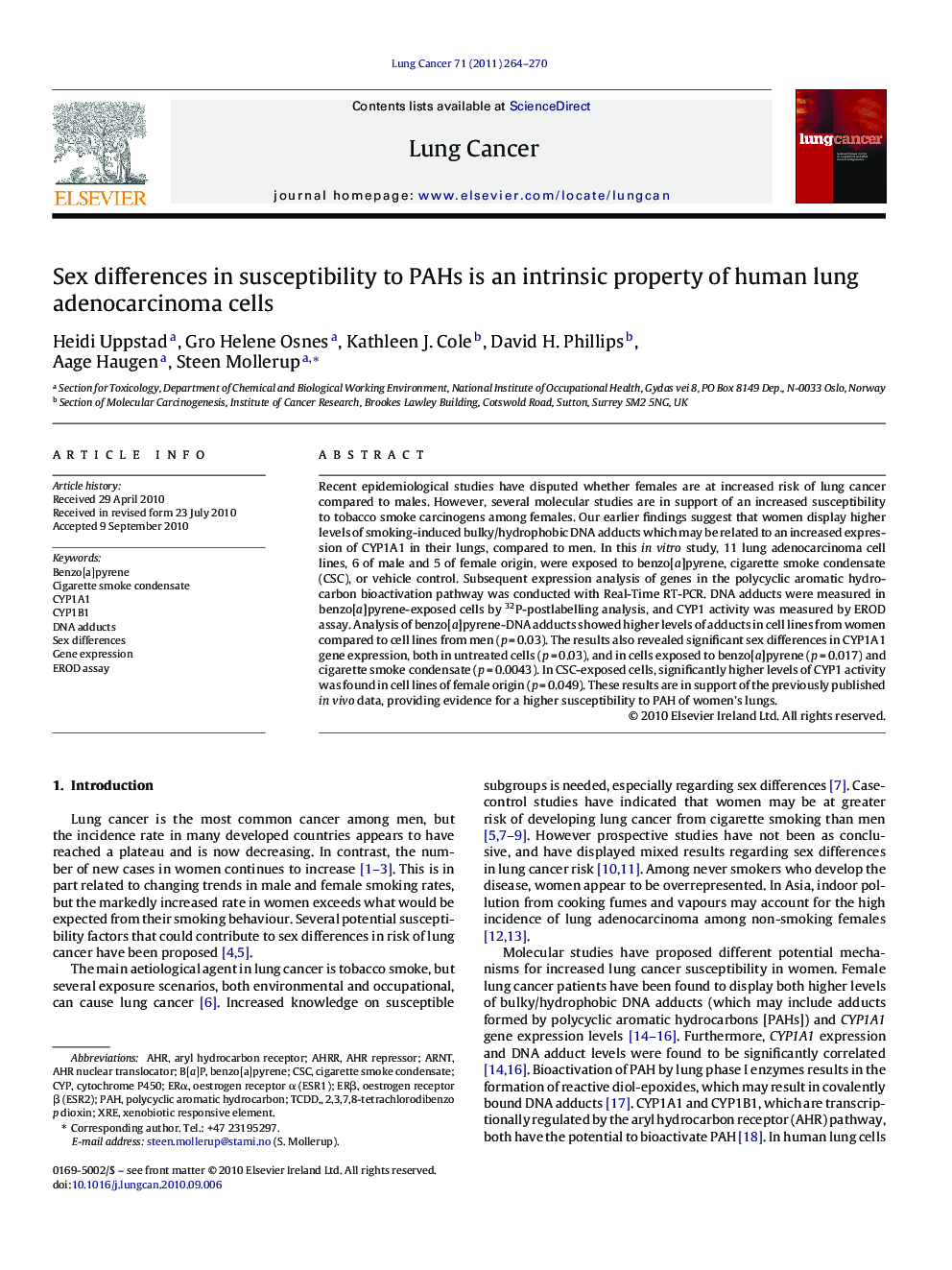| Article ID | Journal | Published Year | Pages | File Type |
|---|---|---|---|---|
| 2142048 | Lung Cancer | 2011 | 7 Pages |
Recent epidemiological studies have disputed whether females are at increased risk of lung cancer compared to males. However, several molecular studies are in support of an increased susceptibility to tobacco smoke carcinogens among females. Our earlier findings suggest that women display higher levels of smoking-induced bulky/hydrophobic DNA adducts which may be related to an increased expression of CYP1A1 in their lungs, compared to men. In this in vitro study, 11 lung adenocarcinoma cell lines, 6 of male and 5 of female origin, were exposed to benzo[a]pyrene, cigarette smoke condensate (CSC), or vehicle control. Subsequent expression analysis of genes in the polycyclic aromatic hydrocarbon bioactivation pathway was conducted with Real-Time RT-PCR. DNA adducts were measured in benzo[a]pyrene-exposed cells by 32P-postlabelling analysis, and CYP1 activity was measured by EROD assay. Analysis of benzo[a]pyrene-DNA adducts showed higher levels of adducts in cell lines from women compared to cell lines from men (p = 0.03). The results also revealed significant sex differences in CYP1A1 gene expression, both in untreated cells (p = 0.03), and in cells exposed to benzo[a]pyrene (p = 0.017) and cigarette smoke condensate (p = 0.0043). In CSC-exposed cells, significantly higher levels of CYP1 activity was found in cell lines of female origin (p = 0.049). These results are in support of the previously published in vivo data, providing evidence for a higher susceptibility to PAH of women's lungs.
